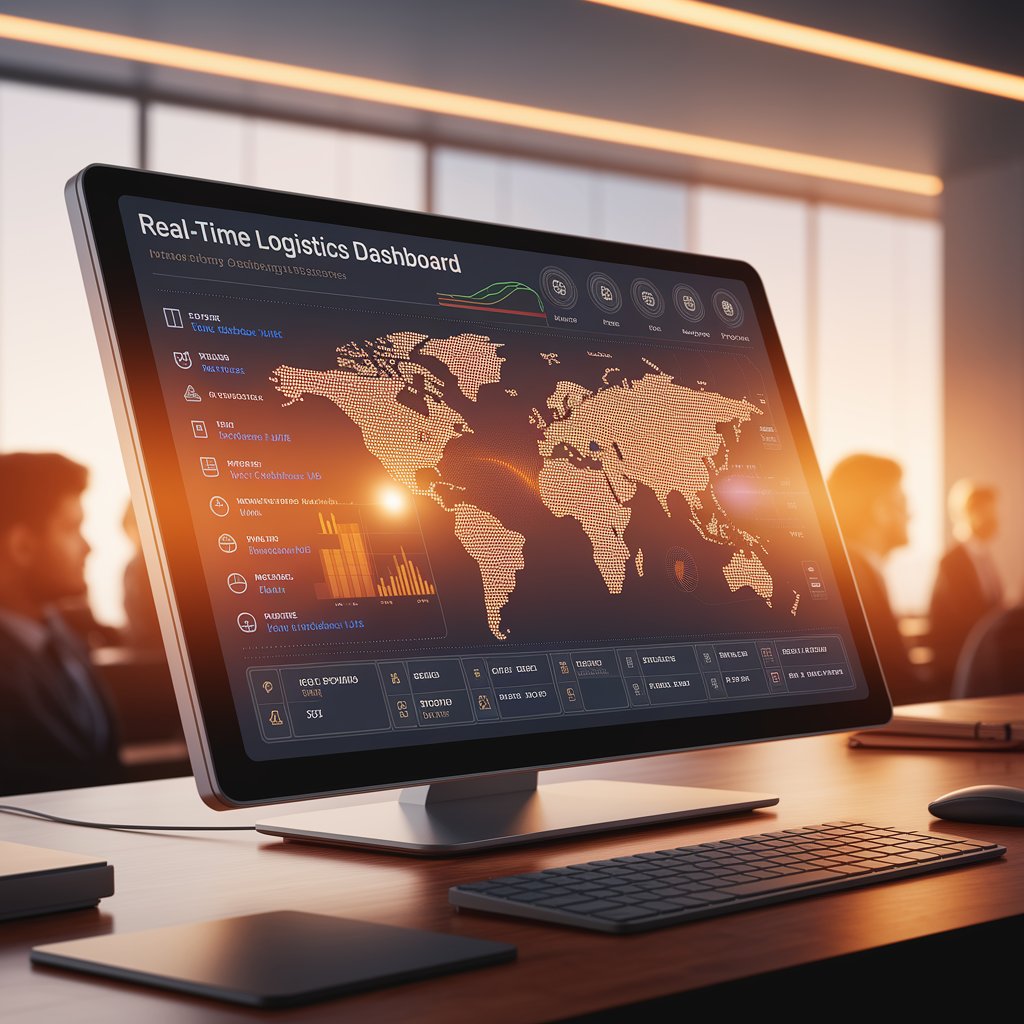Real-Time Logistics Dashboard: Powering Smarter Supply Chain Visibility

Introduction
This is where a real-time logistics dashboard makes the difference. By consolidating data into one interactive platform, it empowers logistics providers to track shipments, monitor KPIs, and respond to disruptions as they happen.
What Is a Real-Time Logistics Dashboard?
A real-time logistics dashboard is a centralized digital interface that aggregates data from transportation, warehousing, and freight systems. Unlike traditional reports, these dashboards update continuously, showing live metrics on shipment status, carrier performance, and inventory movement.

Key Features of Real-Time Logistics Dashboards
- Shipment Tracking: Instant updates on cargo location and milestones.
- KPI Monitoring: Live metrics like on-time delivery, costs, and transit times.
- Interactive Visuals: Maps, charts, and graphs that simplify data analysis.
- Alerts & Notifications: Proactive warnings for delays or anomalies.
- Customizable Views: Tailored dashboards for managers, clients, or carriers.
Benefits for Logistics Providers
- Faster Decisions: Eliminate lag between data capture and reporting.
- Improved Efficiency: Detect inefficiencies in real time.
- Customer Transparency: Share live dashboards with clients for trust.
- Cost Optimization: Identify problem routes and reduce unnecessary expenses.
- Resilience: React instantly to global disruptions or delays.

Real-World Applications
- Freight Forwarders: Monitor multi-carrier performance and customer shipments.
- Warehouses: Track inventory turnover and space utilization.
- Carriers: View fleet efficiency and fuel consumption in real time.
- E-commerce Logistics: Deliver live ETA updates to end customers.
The Future of Real-Time Logistics Dashboards
Future dashboards will integrate with AI, digital twins, and predictive analytics. This will shift dashboards from being informational tools to becoming decision-making engines—forecasting disruptions, suggesting corrective actions, and even triggering automated responses.

Conclusion
A real-time logistics dashboard is the nerve center of modern supply chains. By providing instant visibility, predictive insights, and customizable reporting, it enables logistics providers to operate with greater speed, accuracy, and resilience. For freight forwarders, carriers, and shippers, adopting real-time dashboards is not just a competitive advantage—it’s the foundation for future-ready logistics.
